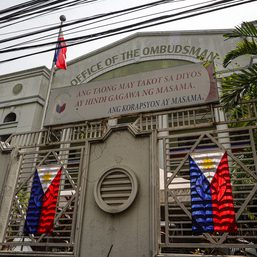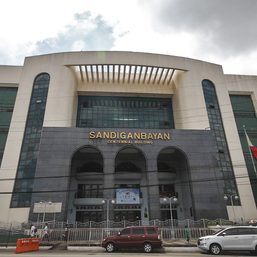SUMMARY
This is AI generated summarization, which may have errors. For context, always refer to the full article.
![[OPINION] The arithmetic of futile protests](https://www.rappler.com/tachyon/2023/10/tl-futile-protests.jpg)
For some, the eleventh-hour budget realignments represented prayers answered. Popular pushback worked. The public garnered enough numbers that their collective voices, their seething righteous indignation, boiled-over, resonating enough among lawmakers to effect changes throughout a bureaucracy hell-bent on hiding its greed and plunder.
But don’t hold your breath. Unfortunately, there is the possibility of a Schrödinger’s Cat paradox given the complexity of contingent budgets, from simplistic bucketing to augmentation, forced savings, off-book transactions, fund transfers, and other shell game tomfoolery. Such complexity was extensively and quite brilliantly discussed by Rappler’s Gemma Mendoza.
Others believe that since there is no honor among thieves, the virtual censure of one ranking official was simply the inevitable outcome of growing suspicions, fear, and infighting among those the public had already distrusted.
Despite being engineered by a handful, under an uninspiring politician sorely lacking leadership skills and unable to unify rabidly ambitious and avaricious avatars, it was simply a matter of time.
Never mind if the insidious protestation within a quickly unraveling administration might have nothing to do with the public good. It was a comforting thought nevertheless. Reason enough for reclining our seats and passing the popcorn.
Two catalysts were at work. One is the brazenness and impunity of a constitutional successor believing that, undisputed, the next presidency is inescapably set. The other is the fear of a power grab bankrolled from secret billions, whether prematurely timed or after six years,
In a true democracy, and even in one claiming it falsely, albeit controlled by despots and dictators, protests and pushbacks are potent counterfoils once a critical mass is attained and numbers are sufficient to effect credible changes.
Unfortunately, the definition of a critical mass is relative. The foregoing are cases in point. The factors that quantify and turn prima facie numbers sufficient to ensure changes cannot be measured.
The bloody outcome of the Tiananmen Square protests and China’s continuing hegemonic despotism despite global condemnation is an historic example. Humankind’s efforts to exact accountability failed. The world’s dependence on China’s manufacturing dominance persists. Those were the numbers that counted.
Closer to home, the official count from our last presidential elections is another case in point. The arithmetic of protests we see as the Marcos administration fortifies itself and establishes institutions guaranteeing perpetuity beyond its six-year term seem futile. The sideshows featuring the Vice President and the Speaker of the House, both constitutional successors, set separate paths for irreversibility.
With apologies to legitimate pollsters and statisticians, numbers can be deceiving. This has been proven in at least two electoral exercises in the United States, the once-upon-a-time beacon of modern democracy. This is also true in our neck of the woods, although extenuating circumstances contaminated the arithmetic, ironically guaranteeing that the official results validate the sampling of pre-election polling.
Note the irony and inherent insignificance of the numbers we are forced to suffer.
Over a third of a century ago, Corazon Aquino with a little over 1,000,000 signatures ran for the presidency. 400,000 volunteered to ensure clean elections. When Aquino’s numbers led in a watchdog’s unofficial count against an irreversible Marcos lead in the official tally, realizing electronic cheating was afoot, 30 technicians manning the Commission on Elections computers walked out. Marcos’ parliament however declared him president. None of the numbers counted save for those who declared Marcos a winner.
In February 1986, a small number of putschists plotted to grab the dictatorship from Ferdinand E. Marcos and thereafter install a junta under one former martial law enforcer. Their betrayal revealed, following the appeals of the Archbishop of Manila, some 10,000 started walking from Cubao. By the time they arrived where the putschists were holed up, the crowd doubled to 20,000, to later grow to “hundreds of thousands.” While numerically insignificant to validate a presidential mandate, the hundreds of thousands counted.
Exorcised of a diabolic dictatorship the Philippines would briefly enjoy true democracy. Until recently. When the past threatened to rise from its infernal crypt, hundreds of thousands again gathered hoping to ensure a credible counterfoil.
When the official numbers cannot be trusted, then perhaps we can turn to the size of crowds and visually extrapolate from there. The numbers who cheered Leni Robredo on and supported her had set historic records for campaign crowds.
But this time the hundreds of thousands were not the numbers that counted. The manic-depressive rise and fall of numbers eventually succumbed to political circumstance. What eventually counted was a commission of five. And what seemed to ensure a democratic mandate propelled by sincere passion and the gnawing fear that we would again plunge into a plundering dictatorship was negated by an officially recognized 31-million count.
A word of caution. Political analysis is our Achilles’ Heel. Barbers, beauticians, and traditional columnists do a better job. So does ChatGPT and political commentators using it. Indulge, however, our sophomoric analysis of the illusory size of crowds.
For those who remember its significance, last September 21 provided second chances to not simply recall but to rekindle a democratic spark.
Of the crowds that collected that day, the smallest, comprised mostly of greying elders coming from the AB social classes was the one outside the offices of the five who counted the 31 million. Albeit resembling Sunday morning after-church socials, their mood was serious. Unfortunately, the crowd failed to fill the Plaza Romano.
Larger crowds comprised of A to D classes including the youth gathered at the Liwasang Bonifacio, Mendiola, the University of the Philippines campus, and elsewhere, there to protest Martial Law and its recent reincarnations.
As small or as large as those crowds were, complicit officials ignored all of them – perhaps another testament to the continuing futility of protests under an autocracy. In the end, we need to identify the few doing the counting. See who controls the numbers. And exact accountability and justice on those. The quantum of numbers has become immaterial. We fear that protestations no longer require numerical superiority to succeed. – Rappler.com
Dean de la Paz is a former investment banker and managing director of a New Jersey-based power company operating in the Philippines. He is the chairman of the board of a renewable energy company and is a retired Business Policy, Finance, and Mathematics professor. He collects Godzilla figures and antique tin robots.
Add a comment
How does this make you feel?
![[WATCH] Bamban POGO scandal: There’s a bigger fish than Alice Guo](https://www.rappler.com/tachyon/2024/07/inside-track-tcard-bamban-pogo.jpg?resize=257%2C257&crop=435px%2C0px%2C1080px%2C1080px)



![[OPINION] What kind of citizens are we?](https://www.rappler.com/tachyon/2024/07/tl-what-kind-of-citizen-are-we.jpg?resize=257%2C257&crop=333px%2C0px%2C1080px%2C1080px)
There are no comments yet. Add your comment to start the conversation.